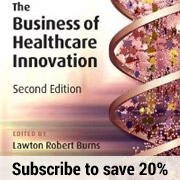Despite projections of rapid growth, the outpatient migration of cardiology has not accelerated as expected — even as cardiology stands out as the fastest-growing ASC specialty, according to a 2022 report from Avanza.
“When these procedures were approved, everyone thought there would be this rapid acceleration into cardiology, but that hasn’t really happened,” Vance Chunn, CEO of Mobile, Ala.-based Cardiology Associates, told Becker’s.
Mr. Chunn joined Becker’s to discuss six of the forces slowing this anticipated shift.
1. Infrastructure and capital investment
Cardiac procedures require significant investment in specialized equipment and facilities, which is a barrier for many ASCs. Building out catheterization labs, imaging capabilities and post-procedure recovery areas also comes with high upfront costs, which many independent or even larger physician groups struggle to absorb.
“It seems difficult to overlay cardiology into a multispecialty ASC. It’s just so different from ENT or GI or other surgical specialties,” he said. “Those don’t require as much equipment — you’ve got a room, recovery, a few pieces of equipment — but cardiology needs expensive systems.”
Even large ASC companies are proceeding cautiously. Tenet’s United Surgical Partners International is approaching the migration cautiously. Tenet’s CEO Saum Sutaria, MD, noted in a recent earnings call that while the opportunity is real, the transition will be slower than anticipated.
2. Hospitals and health systems reluctance
Hospitals and health systems are also slowing the migration by hesitating to invest in outpatient cardiology, often due to fears of hurting existing inpatient service lines.
“What I’m seeing is that larger healthcare systems that have both the funding and a real ambulatory strategy are the ones getting into it,” Mr. Chunn said. “You need capital to do it right, but some systems are hesitating because they realize how expensive it is, and that they might lose revenue in a profitable service line. They’d have to share it with physician investors. So they drag their feet.”
3. Regulatory barriers
In many states, certificate-of-need laws make it difficult to launch or expand ASCs, especially for advanced specialties like cardiology, Mr. Chunn said. These regulations often reflect outdated views of outpatient care and are frequently used by hospitals to block competition.
Danielle Martin, administrator and director of physician services at Richmond-based Virginia Cardiovascular Specialists, experienced this firsthand. The group opened the state’s first freestanding, Medicare-approved outpatient cardiac catheterization lab in 2023 after a lengthy CON process.
“One of the biggest challenges that we experienced when we were doing the CON was the fact that the state manual for the CON for a cath lab was written, in the ’80s or ’90s, many years ago, when outpatient cath labs were just not a thing,” Danielle Martin, an administrator and director of physician services at VCS,” told Becker’s.
Though VCS ultimately secured approval in January 2024, Martin said the outdated framework was a “big hurdle.”
4. Incentive alignment
Many cardiologists are employed by large health systems or corporate organizations, which can limit their ability to invest in ASCs, Mr. Chunn said. This lack of financial stake often reduces the incentive to move procedures to outpatient settings.
In his market, for example, Mr. Chunn has seen university hospitals involved in an ASC joint venture having difficulty engaging its employed physicians.
“They won’t allow them to have ownership — they just ask them to use the facility,” he said. “But there’s no real incentive …. Especially if they have to travel or adjust their schedules. I think the systems that are figuring this out are the ones that are either allowing some kind of ownership or tying compensation to helping the system save money.”
Without investment opportunities or compensation structures that promote efficiency and case volume in ASCs, there is little motivation to change current practice patterns.
“I think this whole movement is heavily driven by the ability for physicians to have ownership and share in the profits,” he said. “That motivates people — not just for the money, but also to be involved in quality and outcomes. But you have to give them a reason, and usually, that’s financial. It’s very, very financially driven.”
Independent groups like VCS are finding success by promoting equal ownership.
“The initial [founding] members of the group made it pretty clear early on that the success of the group would be greatest if all shareholders have equal status,” Darryn Appleton, MD, director of VCS’ cardiac catheterization lab, told Becker’s. “So there’s no seniority kind of situation where senior members have more say. Whenever we’re coming up with new ideas to launch a venture like this, it’s all based on equal votes.”
CardioOne, a cardiology-focused management services organization, is also supporting independent growth by helping cardiologists launch private practices without acquiring or employing them.
5. Payer readiness
Payers have been slow to adapt reimbursement policies to support cardiology in ASCs, Mr. Chunn said. Payment models such as bundled payments and site-neutral reimbursement are still evolving, creating financial uncertainty for providers.
Mr. Chunn said payers are “scrambling. They’re having a hard time with pricing and contracts because it’s a new space.”
“If you do this the right way, you don’t have to compromise on quality — but you can do it in a more cost-effective environment,” he said.
Some payers have also begun to acknowledge cardiology’s outpatient migration. Aetna, for example, dropped its policy to not cover cardiac positron emission tomography/CT scans in July 2024.
6. Clinical complexity
Finally, not all patients are suitable for outpatient cardiac procedures. The complexity of cardiac care, combined with the need for emergency preparedness and higher-acuity services, adds another layer of hesitation for ASCs considering entry into the space, Mr. Chunn said.
The post What’s stalling the outpatient cardiology revolution? appeared first on Becker’s ASC.


